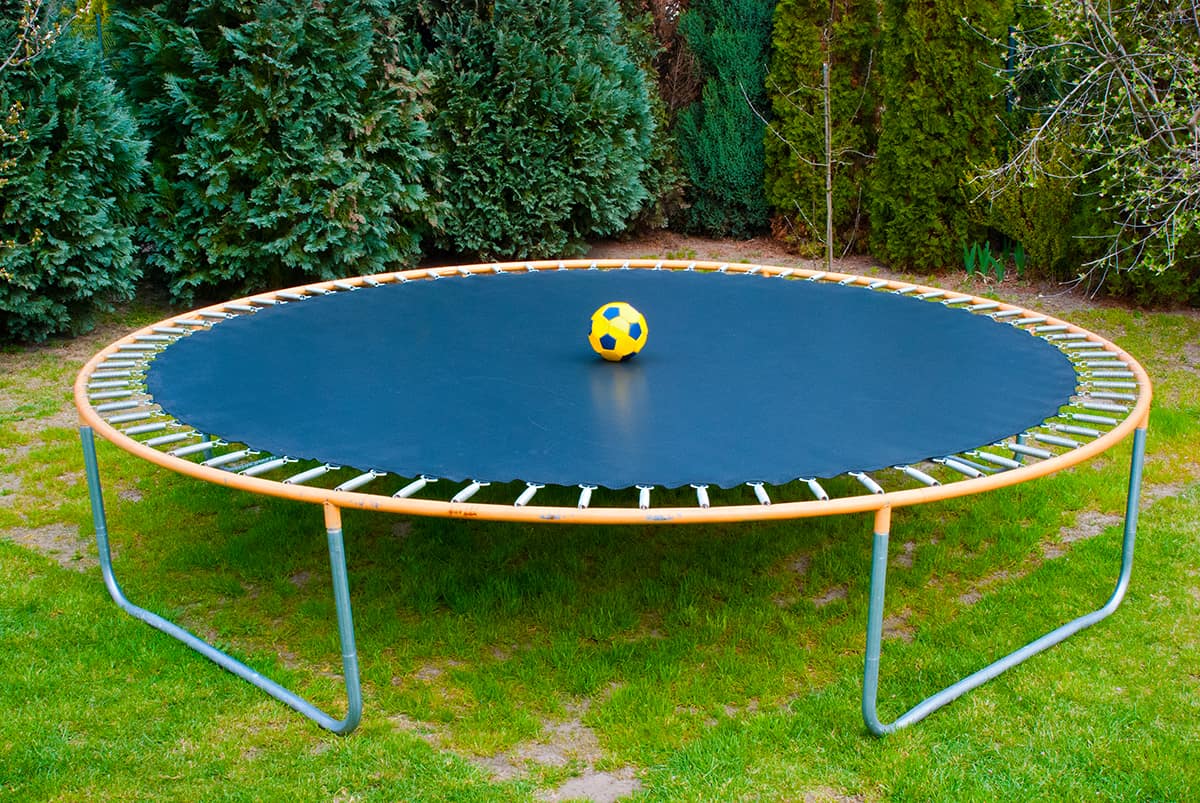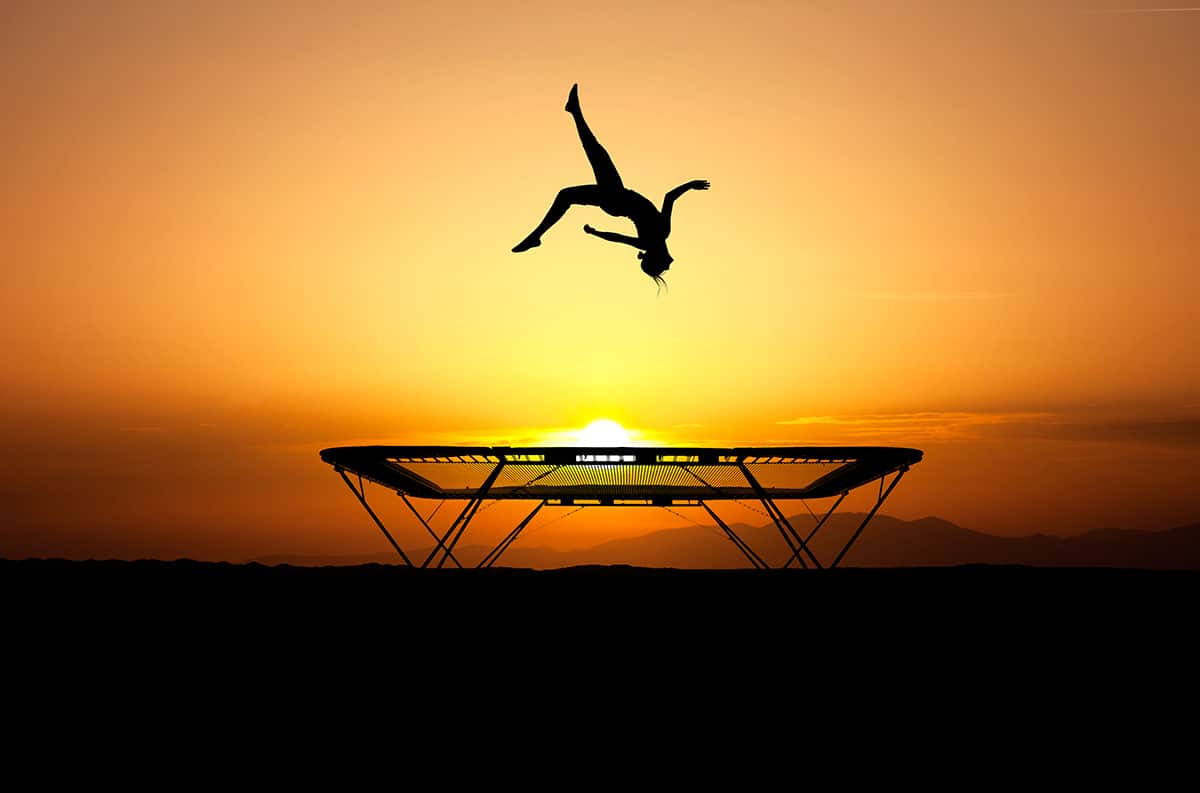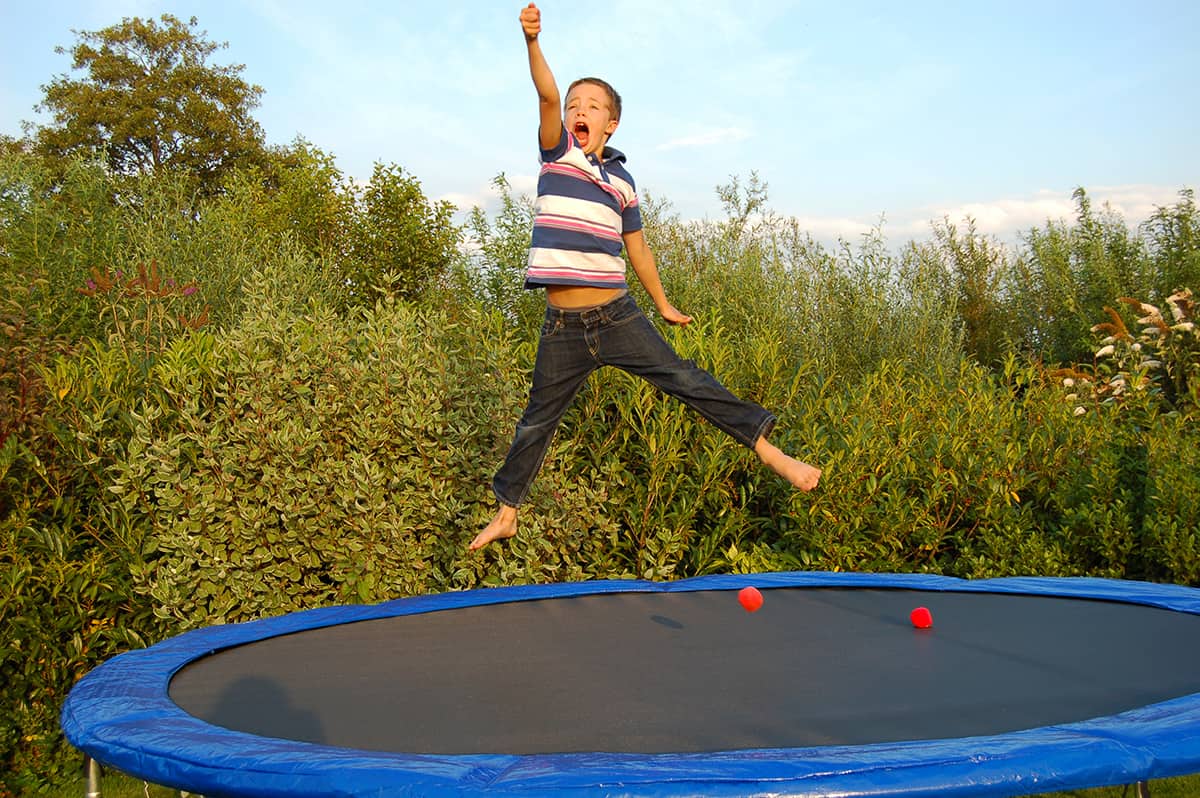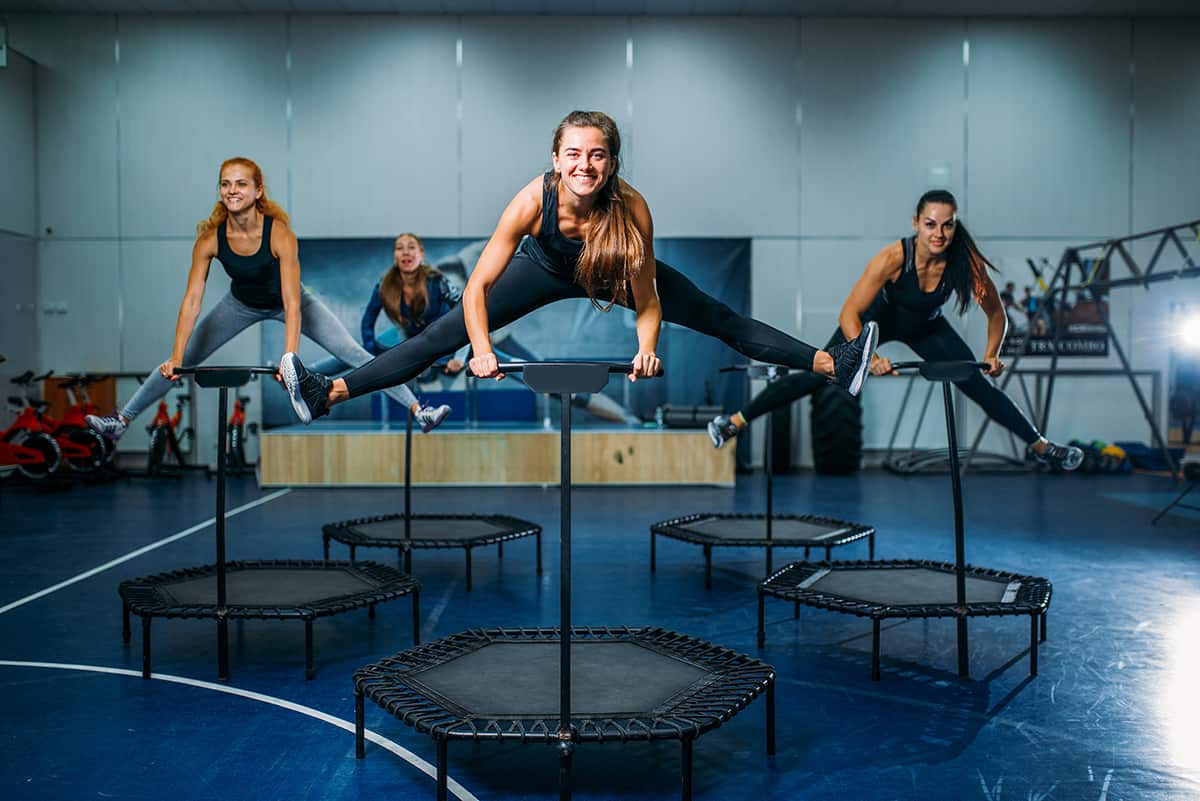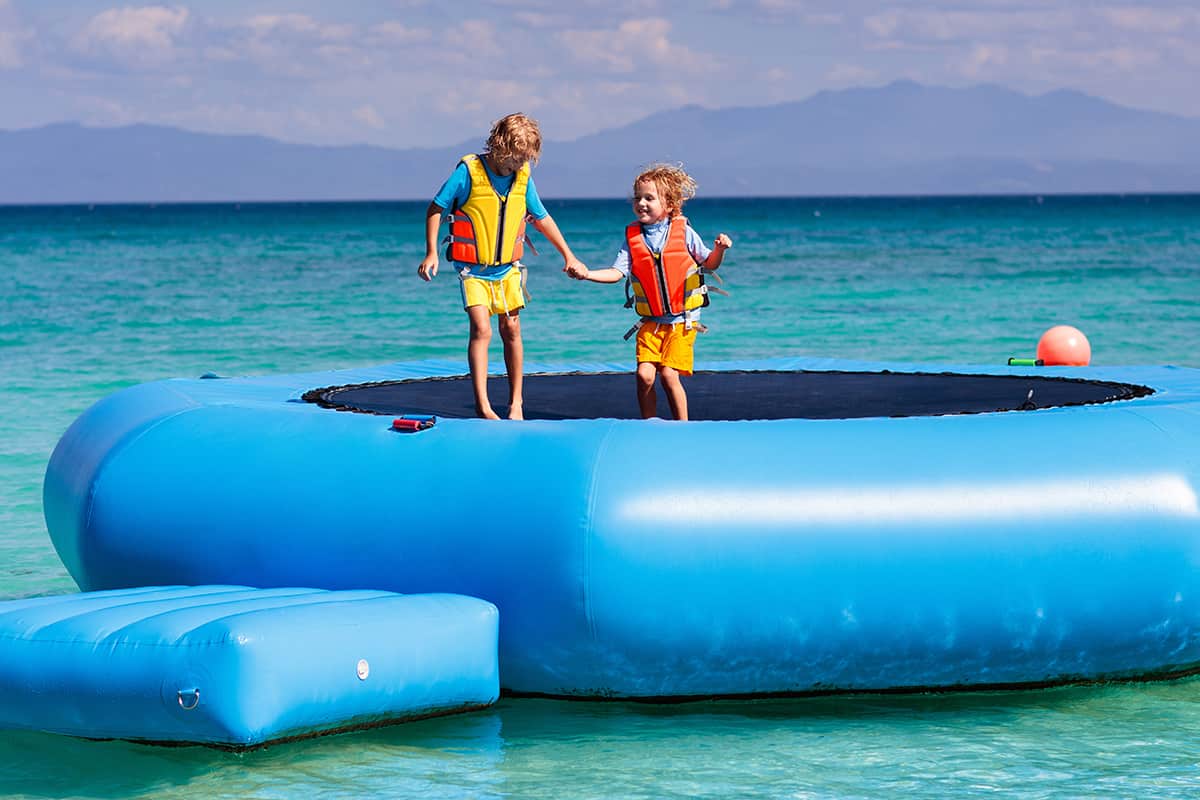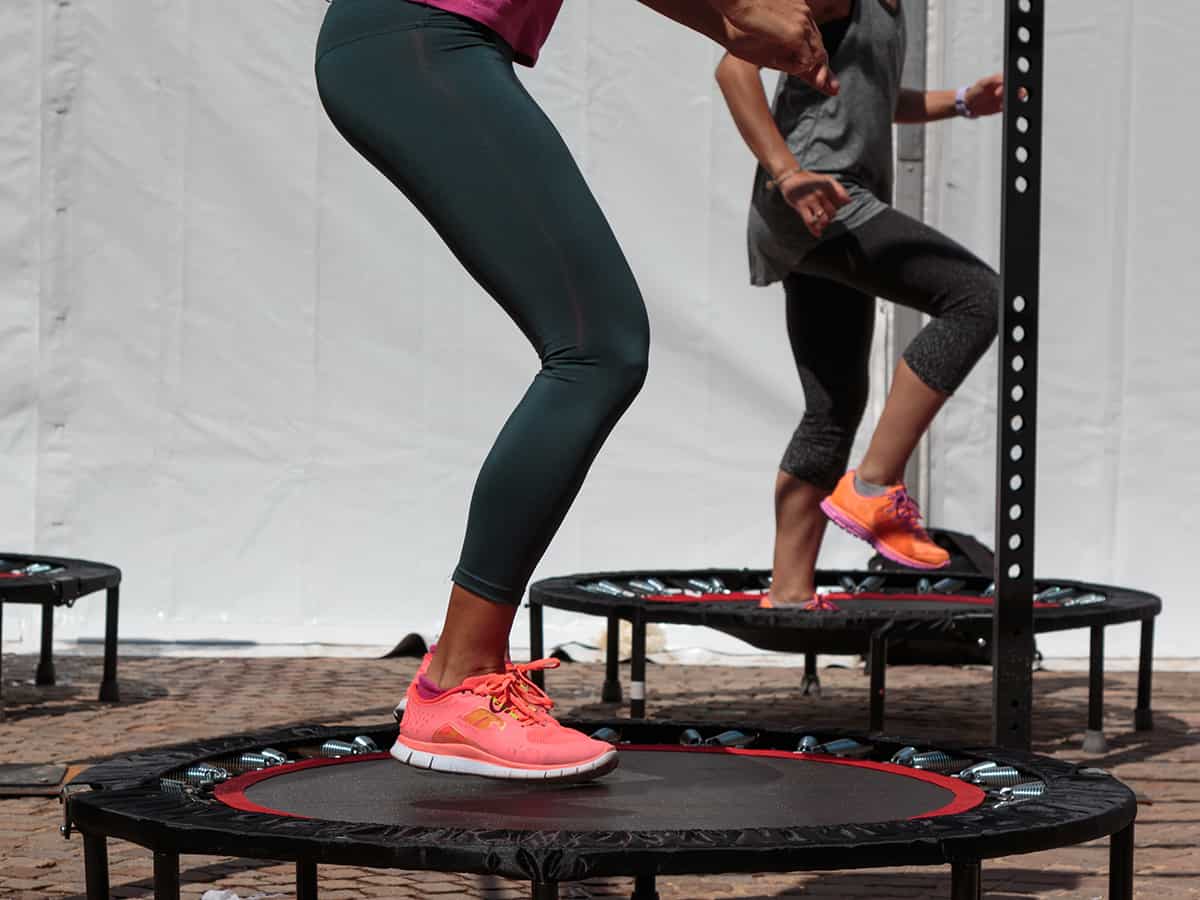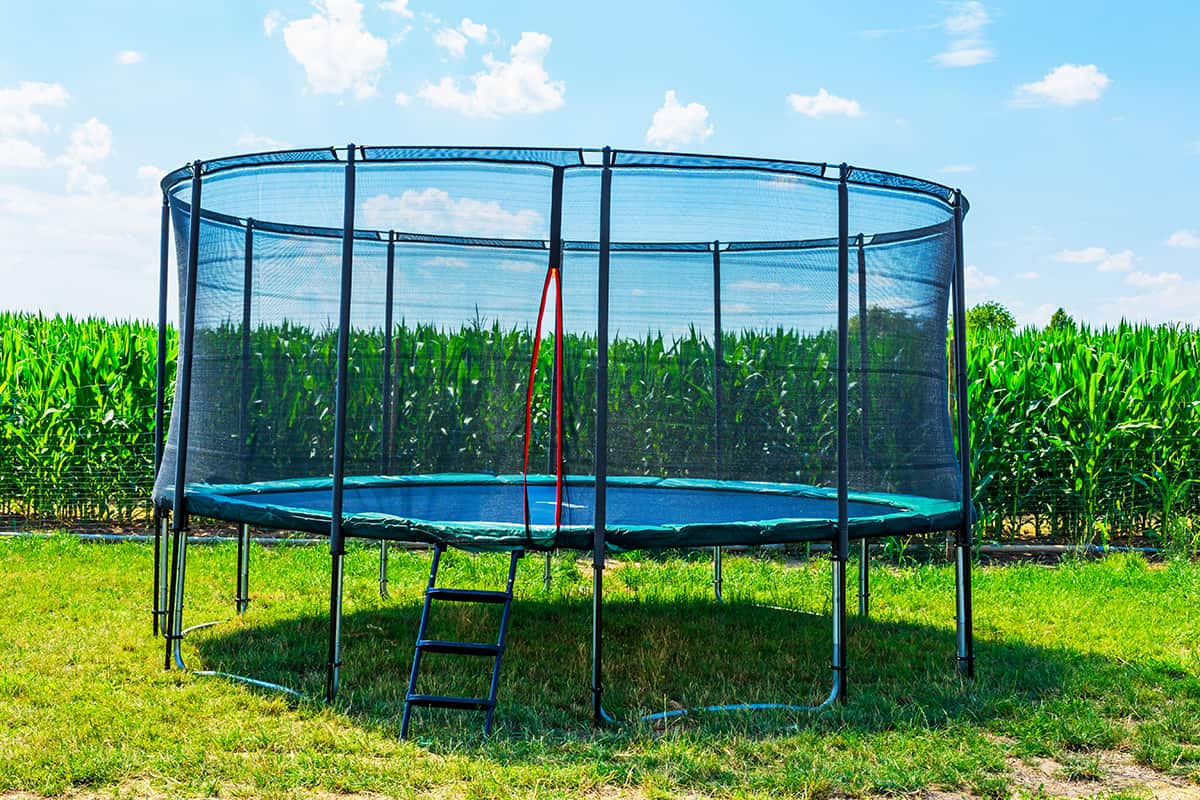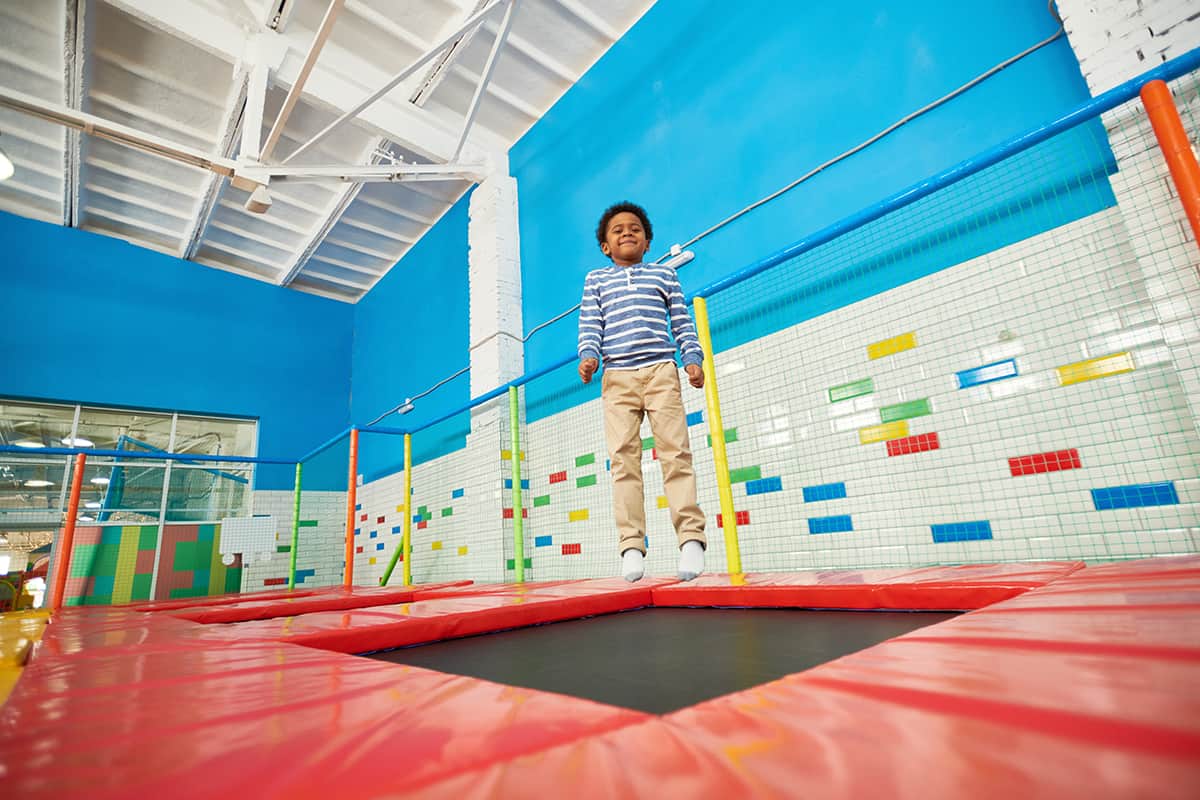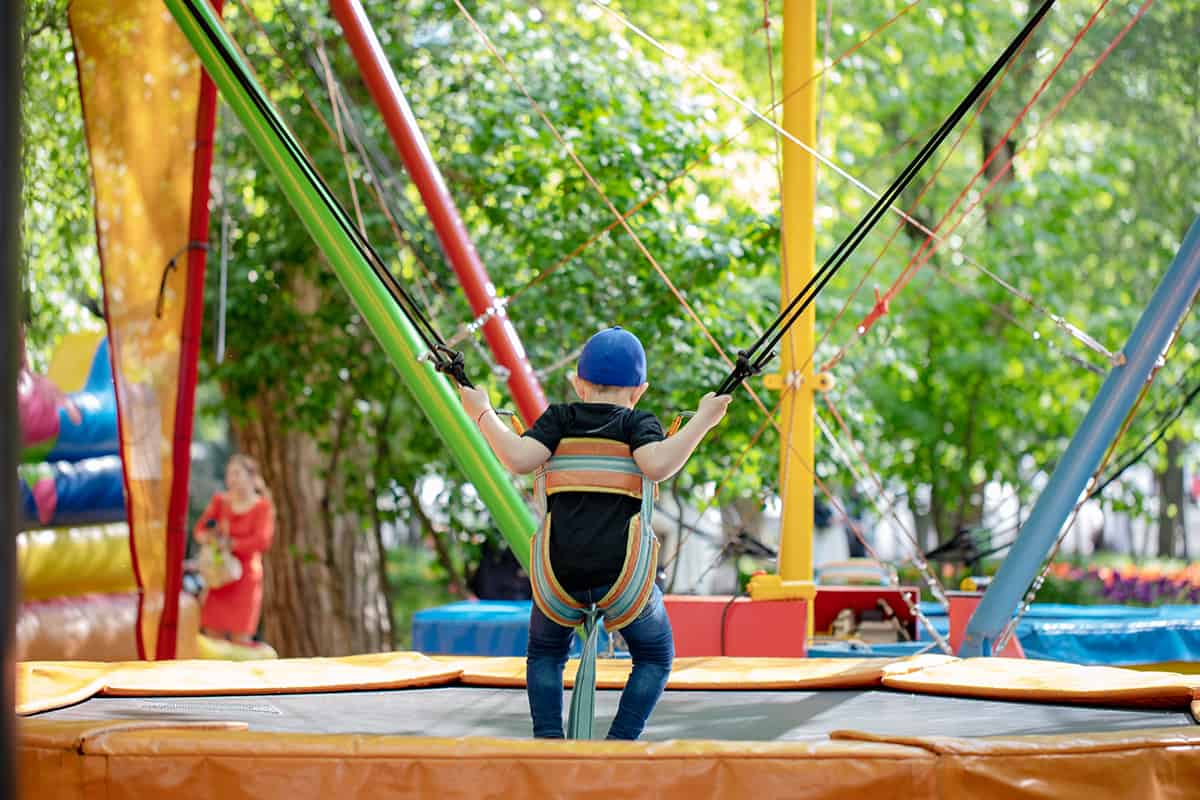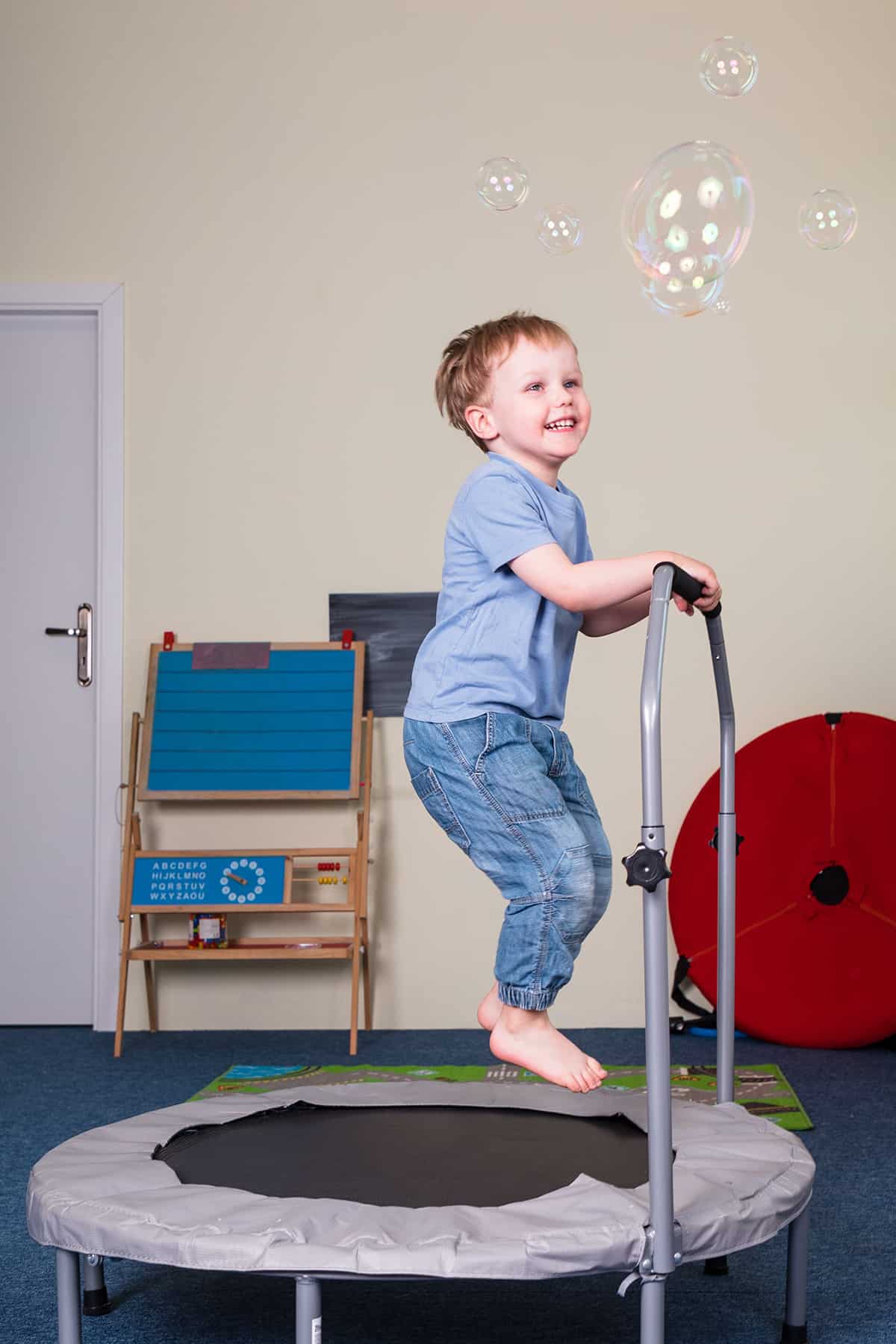Trampolines are a piece of equipment that can be used for exercise or recreational enjoyment. They are popular with all ages and come in a range of different shapes and sizes to suit various needs.
Most trampolines consist of a frame and a stretchy surface upon which the user can jump and spring up into the air. Here we will look at the various types of trampolines available.
Rectangular Trampoline
A rectangular trampoline is going to be your best option if you are an athlete, such as a gymnast or cheerleader. This is because rectangular trampolines tend to come in much larger sizes compared with other shapes of trampolines, and therefore offer more jumping surface for practicing complex moves and routines.
A rectangular trampoline also generally will have a higher weight limit to support multiple athletes at one time or older and heavier users. A rectangular trampoline has a sweet spot around the middle of the jumping surface which provides the user with the best chances for the highest bounce, which will result in greater opportunity for more complex moves while in the air.
Rectangular trampolines are also great for recreational use because their shape means they fit well into standard-shaped backyards. A trampoline is a sought-after item for many children which can provide endless hours of fun.
They are most commonly set up in a backyard, so if your backyard is square or rectangular, then a rectangular-shaped trampoline is going to fit nicely into a corner of your backyard, making the best possible use of the space.
This is one of the reasons why some people favor rectangular trampolines over circular trampolines for recreational use because circular trampolines don’t fit snugly into the corner of a yard.
Circular Trampoline
Circular trampolines are also known as round trampolines. These are the most common type of trampolines you will find if you are looking for a backyard trampoline to buy for a child.
These trampolines are great from a safety perspective because the circular shape and the way it works with weight distribution means that the user is naturally guided towards the middle of the trampoline, where they are much less likely to fall off and hurt themselves.
Round trampolines come in a wide range of sizes to suit most age groups and most budgets. These trampolines work well in backyards, but they aren’t great if you are tight on space and trying to maximize the square footage of the yard because if you position the trampoline in a corner, you will have blocked off a portion of the space and made it unusable.
The fact that circular trampolines are the most widely available usually means you will be better able to find a good deal on these trampolines. They also tend to be more affordable than other trampolines of different shapes with similar weight capacities.
For example, a circular trampoline with a weight capacity of 100kg will be less expensive to buy than a rectangular trampoline with a weight capacity of 100kg. This makes them the best option if you are on a budget or want to get the largest-sized trampoline for your money.
Square Trampoline
Square trampolines are less common than circular and rectangular trampolines, but they offer a good compromise between the two. The shape of a square trampoline means that, like with circular trampolines, the user is guided towards the middle of the trampoline, where they will be at the least risk of falling off.
This shape of trampoline works well for both recreational use as well as athletic training. They tend to be more affordable than rectangular trampolines, so they can work well for athletes on a tight budget, and they still provide adequate jumping space, though obviously will have a smaller surface area than comparable rectangular trampolines.
Like rectangular trampolines, square trampolines work well if you are short on space because they make good use of square-shaped rooms or square backyards by fitting easily into a corner.
Octagonal Trampoline
Octagonal trampolines look much like circular trampolines, but of course, with more angular edges. They will take up a similar space to a circular trampoline and can be awkward if you are hoping to fit the trampoline into a corner space.
These trampolines offer similar benefits to round trampolines and can be great for multiple children to use at once as they typically come in large sizes with high weight limits. This makes them ideal if you have more than one child or frequently have other children over for playdates or parties.
Octagonal trampolines are less common than circular trampolines, and as such, there will be less variety to choose from.
Water Trampoline
A water trampoline is exactly as you might expect from the name- a trampoline which is used on the water. These trampolines do not have springs but instead have an inflatable frame made from large tubes around the perimeter of the trampoline. These come in various shapes and sizes but are most typically very large and suitable for several people to play on at once.
You are likely to see one of these types of trampolines at a water play park on a lake or large body of water or an inflatable assault course on water.
You can use them in the same way as you would a regular trampoline, or sometimes a water trampoline will be positioned near to another inflatable piece of equipment set at a greater height, so you can jump from this directly onto the water trampoline for a greater bounce.
Mini Trampoline
A mini trampoline is also known as an exercise trampoline, a rebounder, or a trampette. These offer a great workout at home because they are small enough that they can be used in an apartment or living room. Some models even fold up so that they can be stored more easily behind a sofa or in a cupboard.
If you are keen to start a home exercise regime but don’t want to spend a huge amount of money on gym equipment like a running machine or rowing machine, then a mini trampoline is a great low-cost alternative that will allow you to build muscle strength and burn calories.
You can bounce on a mini-trampoline to get in shape while watching the TV, or there are plenty of dance classes and exercise classes you could follow online with a mini-trampoline.
These types of trampolines are best for adults as they don’t give a lot of space for children to bounce on, which can result in them falling off more easily and hurting themselves.
Caged Trampoline
A caged trampoline is one that has a surrounding vertical safety net all around the perimeter of the trampoline. Caged trampolines can come in any shape and size, but they are most commonly seen on the circular types of trampolines. You can also buy a trampoline cage as an add-on item for your trampoline, which adds a much-increased level of safety for a relatively low price.
Safety nets for trampolines allow the users to bounce around more freely without fear of falling off, and they give parents additional peace of mind. As the cage of a caged trampoline is made from netting, it is transparent, and therefore adults supervising the children can see them at all times to be sure they aren’t doing anything dangerous or getting hurt.
If you are buying a trampoline for children and are choosing between a caged trampoline or an un-caged trampoline, then you should definitely go for the caged trampoline.
Although this safety element comes at an additional cost, it will mean that your trampoline gets much more use, and it enormously reduces the risk of your children or their friends harming themselves while using it.
In-Ground Trampoline
An in-ground trampoline is something that is becoming popular in parks and playgrounds and is also beginning to take off as an at-home piece of play equipment.
Ordinarily, a trampoline needs to be fitted into a frame that is raised off the ground. This is because when someone jumps on the stretchy surface of the trampoline, it gets pushed down, and you don’t want your feet hitting the floor.
With an in-ground trampoline, this raised frame is not needed because a large hole is excavated beneath the surface of the trampoline, so you can jump right on it and bounce below ground level. This is a much more involved project compared to simply building a trampoline straight out of the box; however, it has several benefits.
An in-ground trampoline looks much less intrusive in a backyard and blends into the background more easily. This makes it a good option if you don’t like having play equipment in your backyard, ruining the look of your outdoor space.
It is also much safer than a raised trampoline because if anyone falls off the bouncy area of the trampoline, they will simply be stepping on the ground around it- usually lawn- because in-ground trampolines are fitted at ground level.
The main problem with in-ground trampolines is that they are permanent and hence cannot be moved. This might be a problem if you want to redesign your garden and move the trampoline to a different place, or you move home and want to take the trampoline with you. These are issues that you would not encounter with framed trampolines, as these can be taken apart and moved easily.
Springless Trampoline
A springless trampoline is exactly as it sounds; it is a trampoline that does not use springs. Instead of springs, stretchy bands are used, which improve the safety of the trampoline. Many trampoline injuries occur as a result of fingers or toes getting stuck in trampoline springs, so if you remove the springs, then you greatly reduce the chance of a trampoline user getting hurt.
Springless trampolines are more expensive than regular trampolines, and they are also less common, so you will find you have less choice compared to trampolines with springs. Some people may be put off by the extra cost of these trampolines; however, when you consider the way the lack of springs impacts the safety, you may feel this additional expenditure is worth it.
Bungee Trampoline
A bungee trampoline is a trampoline that has bungee straps attached to a tall frame. This is a piece of equipment you might see at a fair or fete and pay to have a turn on.
Adults or children can be strapped to the bungee cords with some safety clips and a harness and then use the trampoline to shoot themselves high up into the air and even perform somersaults.
Toddler Trampoline
A toddler’s trampoline will be a similar size to a mini trampoline or exercise trampoline, at a diameter of around 3 feet. These are small trampolines that have a taller frame on one side which is used as a handle.
This provides stability for a toddler, so they can grip onto the handle while bouncing in one position. A toddler trampoline is small enough that it can be used indoors or outdoors, creating a space for small children to bounce whatever the weather.
If your little one loves bouncing on the bed, then a toddler trampoline will give them a dedicated area for burning off their energy. Bouncing on a toddler trampoline will be safer than bouncing on a bed because these types of trampolines are low to the ground, so in the event of a child falling off, they won’t have far to fall.
Toddler trampolines have surfaces that are not as stretchy as trampolines for older children, so the toddler won’t be able to jump as high, which also makes it safer.
The surface of a toddler trampoline will be anti-slip, so the child can bounce in socks, shoes, or bare feet without slipping over. Some toddler trampolines will be made with stretchy bands rather than springs, which will also make them much safer for toddlers to use.
